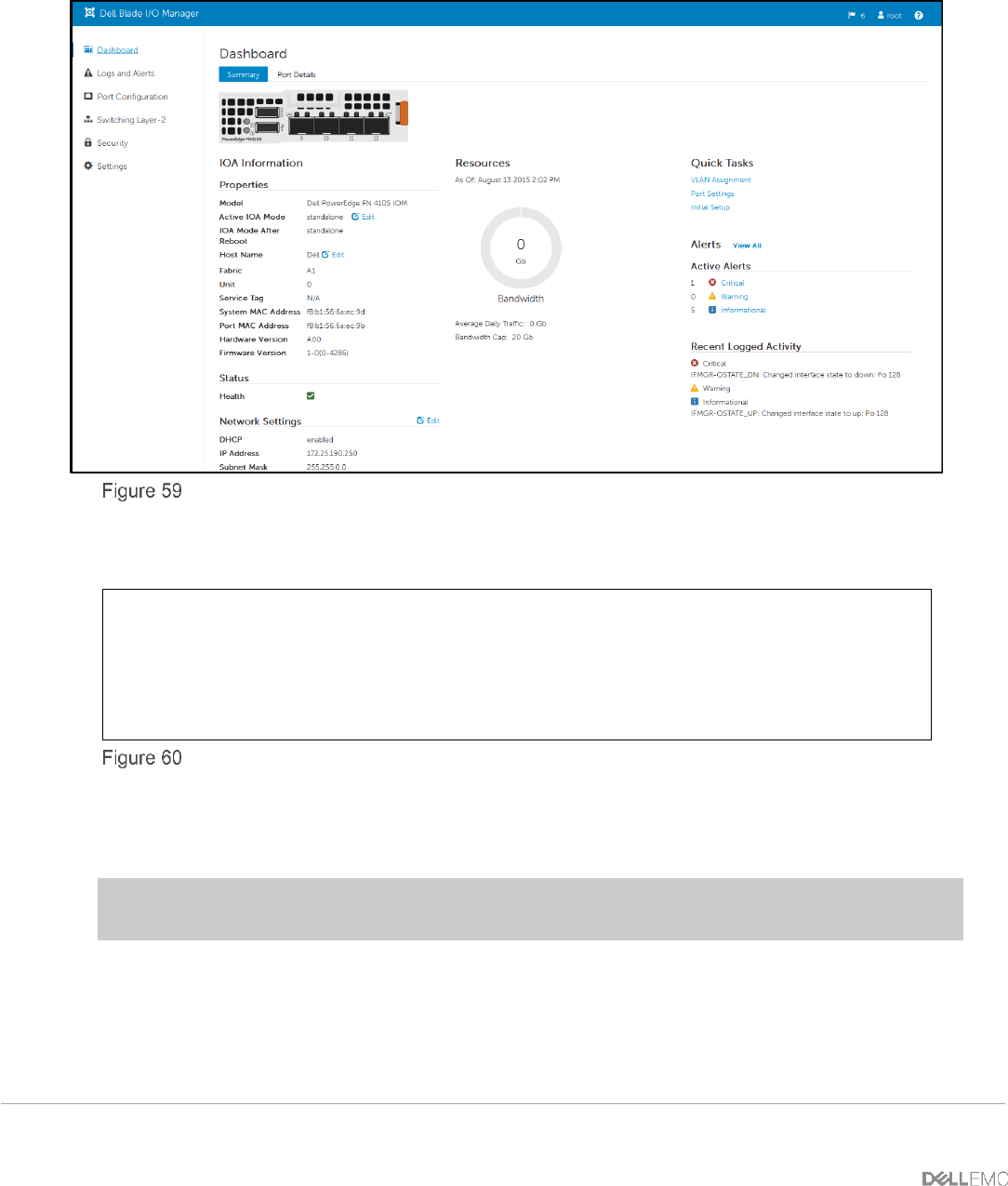Deployment Guide
Table Of Contents
- 1 Introduction
- 2 The Dell FX2 and FN I/O Modules
- 3 Initial out-of-box connectivity check and default settings
- 4 VLT and the example environments
- 5 FN IOM Dell Blade I/O manager and internal port mapping features
- 6 Environment One: Basic VLT deployment with VLT mode
- 7 Environment Two: Dell Networking switches with mVLT and IOM in Full Switch mode
- 8 Environment Three: Dell Networking switches with mVLT and FN IOM in programmable MUX mode.
- 9 Environment Four: VLT interoperability with Cisco vPC
- A References
- B Components
- C Terminology
- D Reset FN IOM to Default Factory Configuration
- E FN IOM initial out-of-box configuration and default settings
- F Support and feedback

95 PowerEdge FX2 – FN I/O Module – VLT Deployment Guide | Version 2.2
Ensure the FN IOM is in Standalone Mode using the Dell Blade I/O Manager GUI Dashboard view
(Figure 59) below.
Dell Blade I/O Manager standalone mode dashboard view
The CLI command show system stack-unit 0 iom-mode (Figure 60) can also be used to
confirm this default state.
Dell#show system stack-unit 0 iom-mode
Unit Boot-Mode Next-Boot
------------------------------------------------
0 standalone
FN IOM Mode show command
If it is not in Standalone Mode, reset the FN IOM to factory defaults. Figure 61 shows how to reset to
factory defaults in the CLI while Figure 62 through Figure 67 shows how to use the Dell Blade I/O
Manager.
Note: It is a best practice to reset the FN IOM to factory defaults when changing between modes of
operation i.e. Standalone mode to VLT, Stacking, Full Switch, or Programmable Mux.










